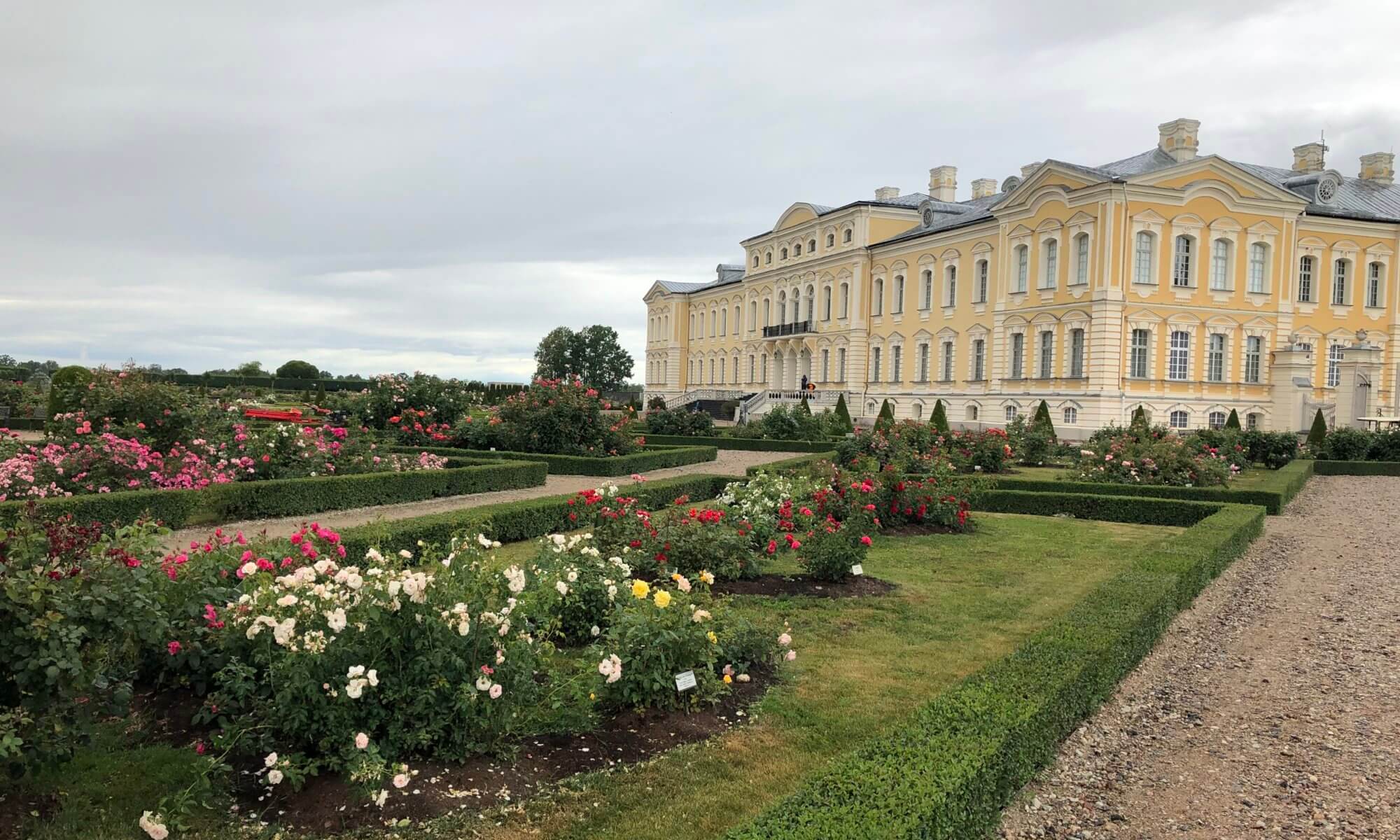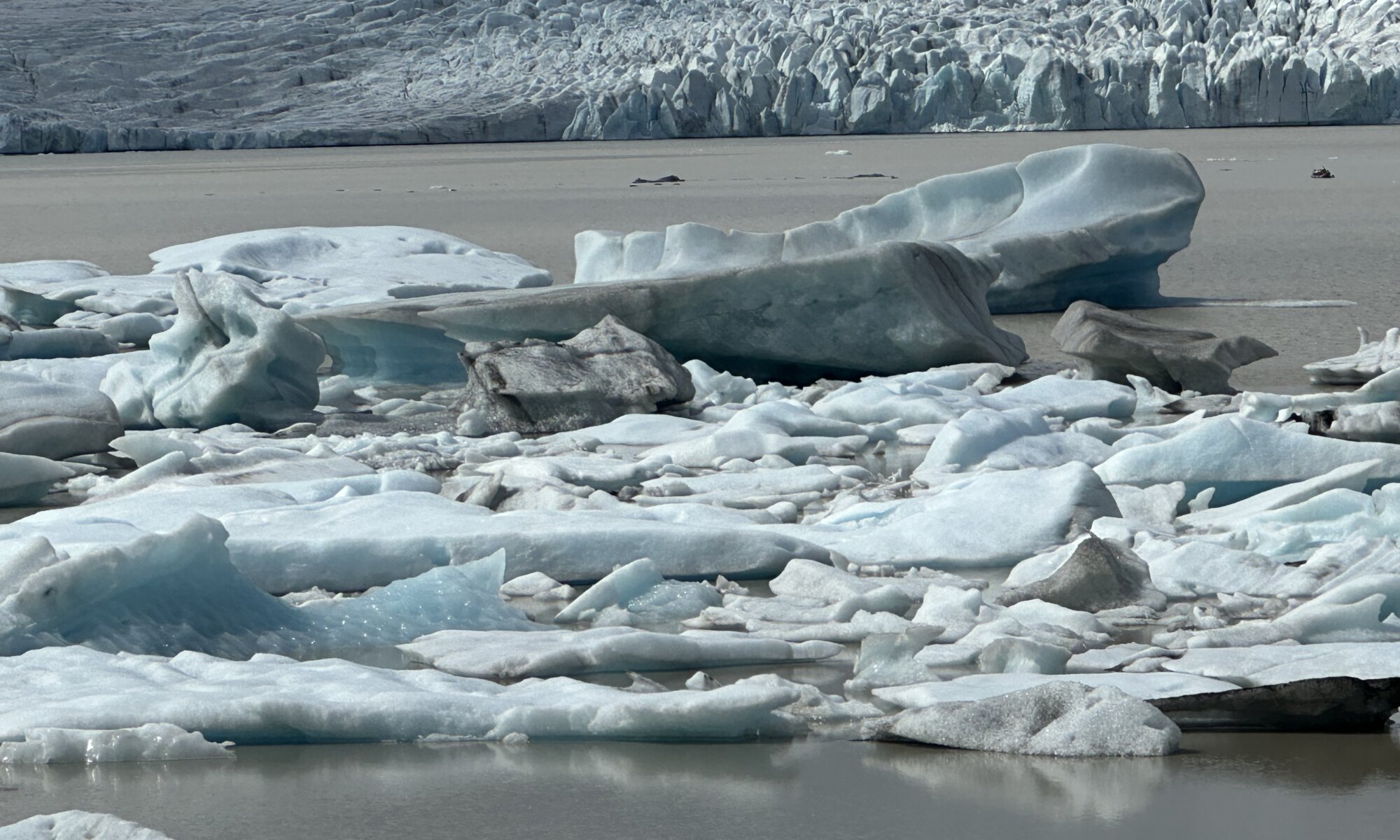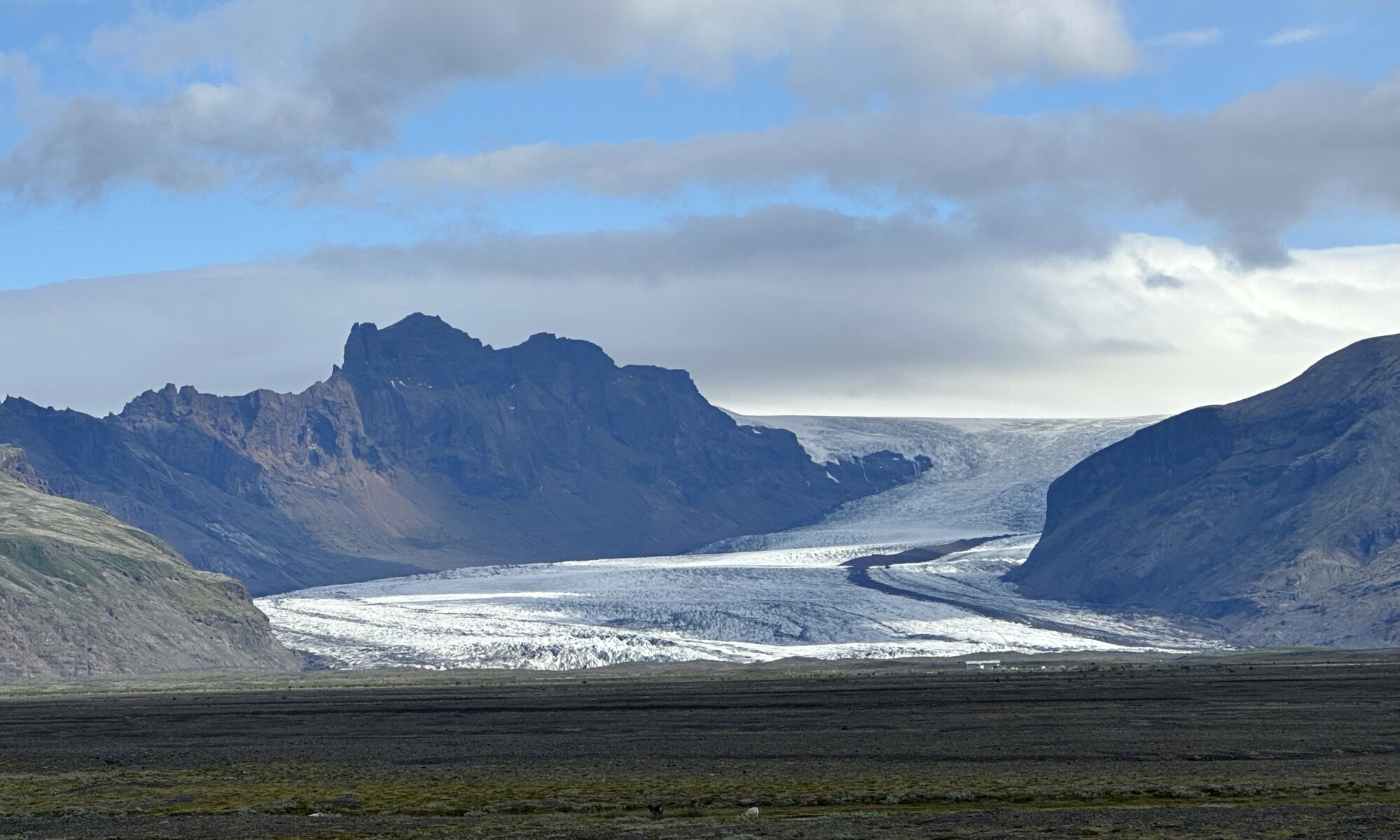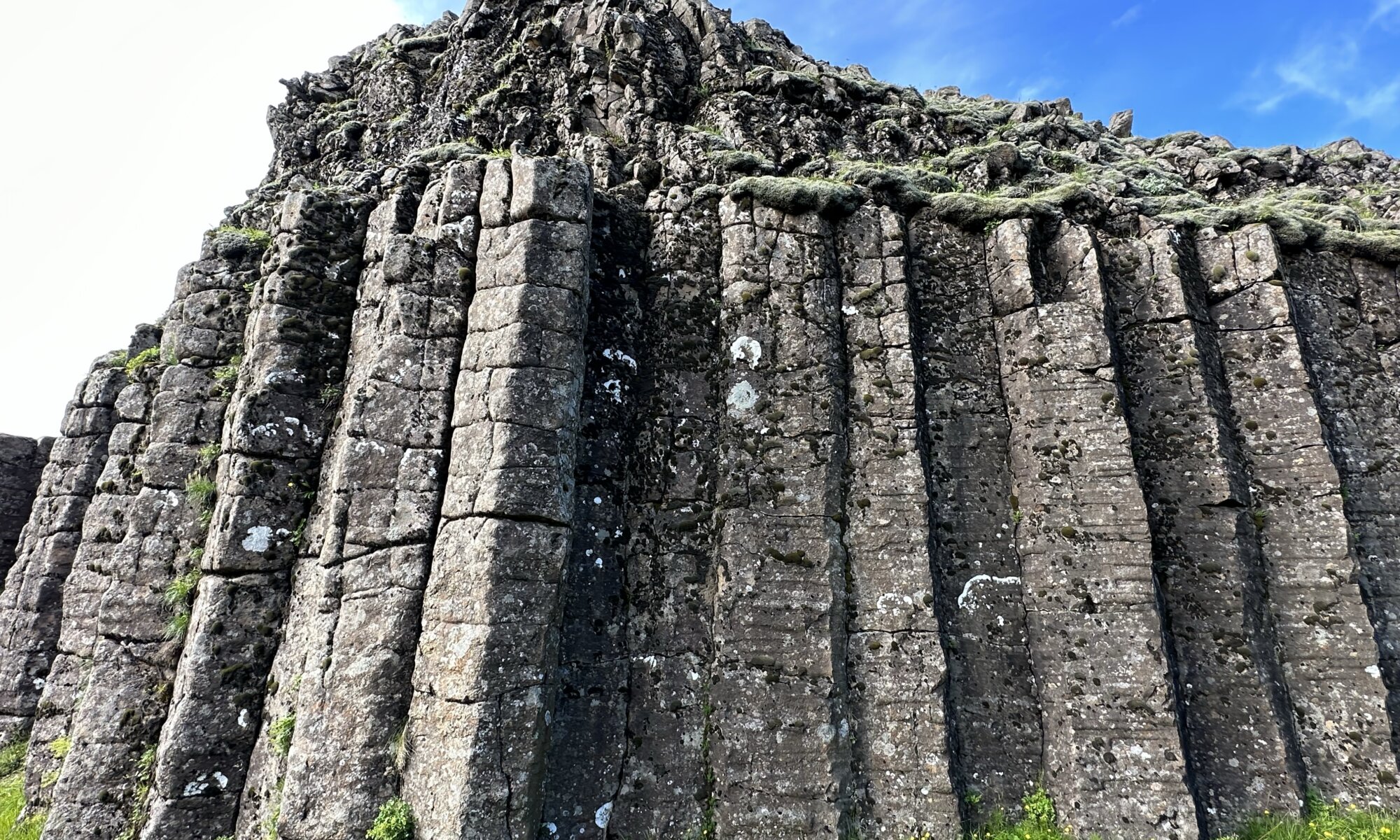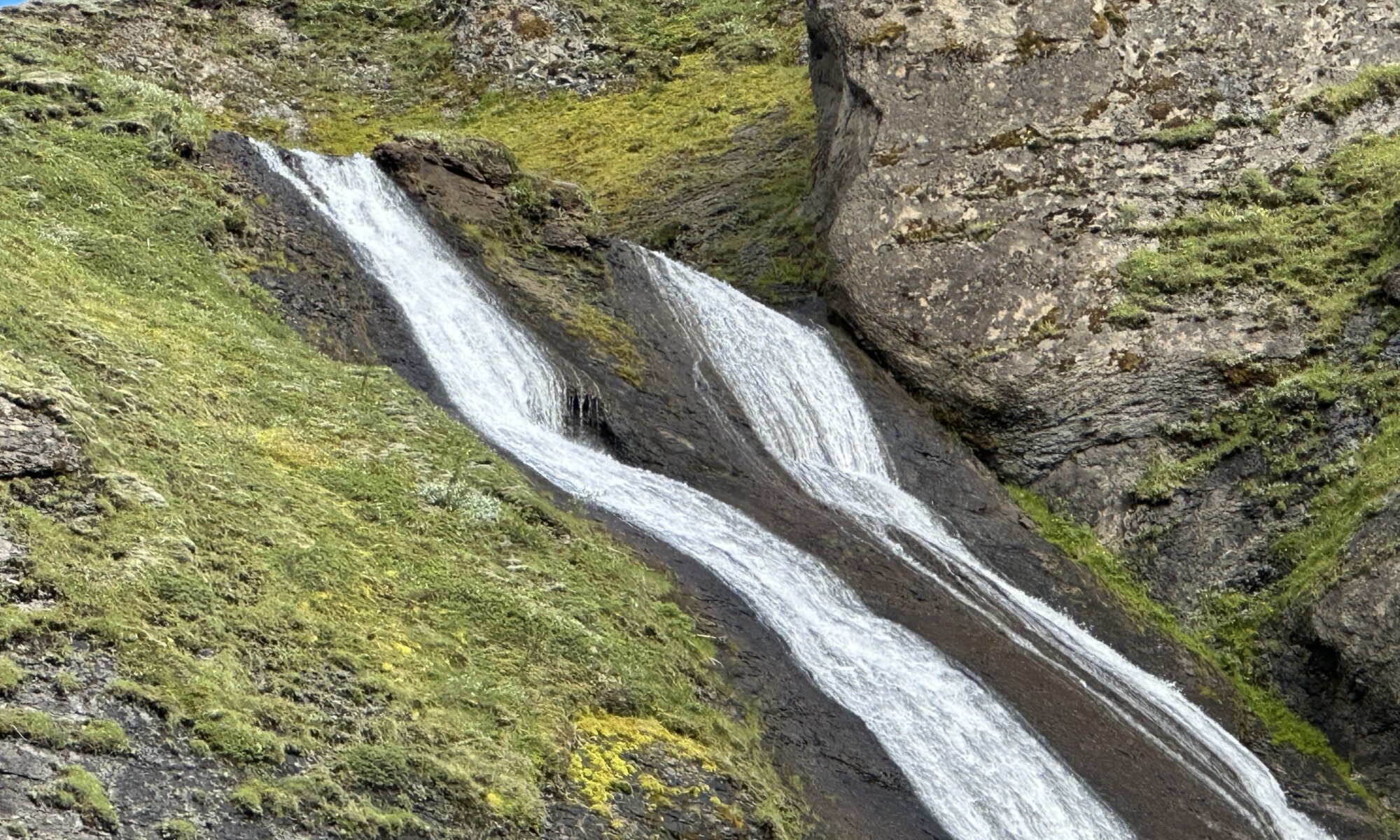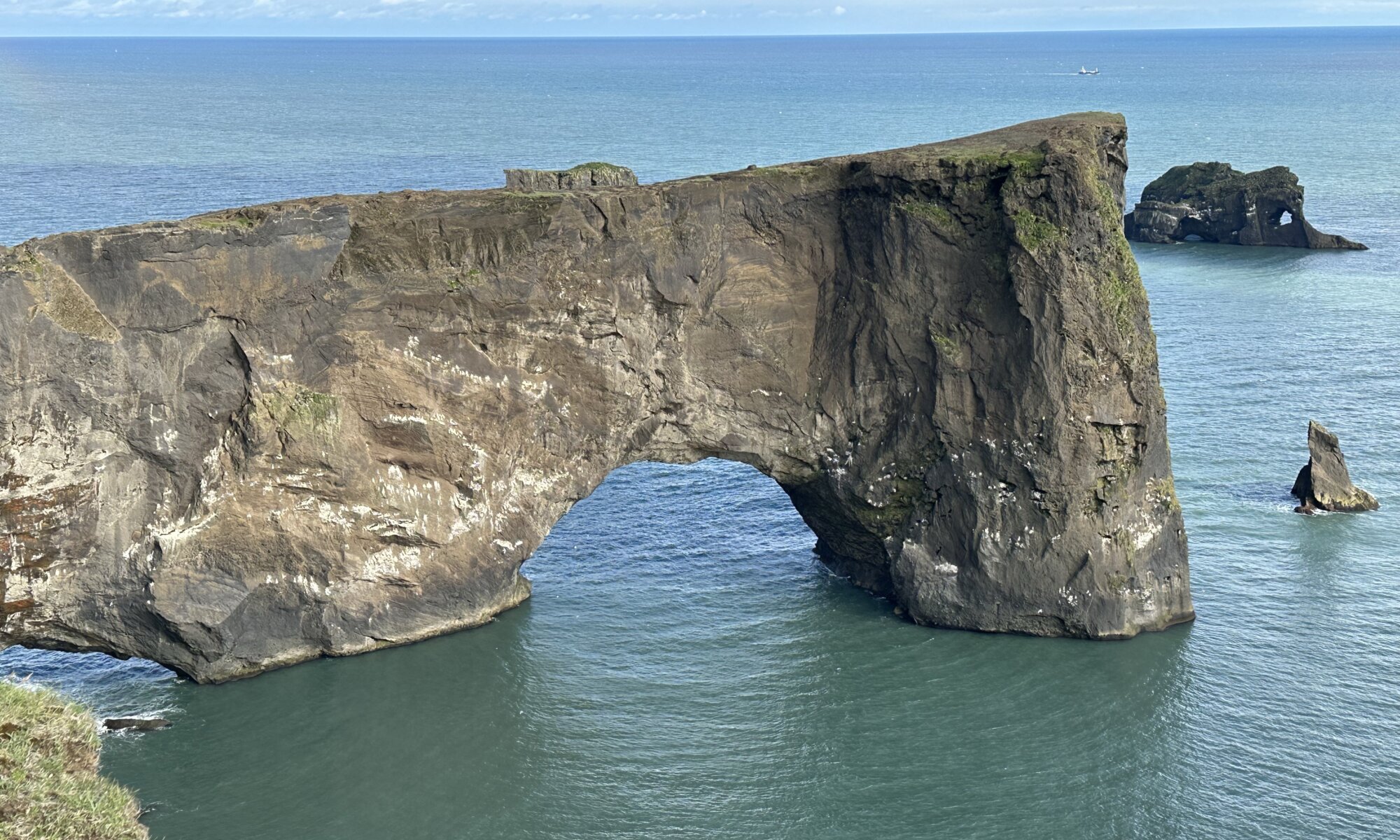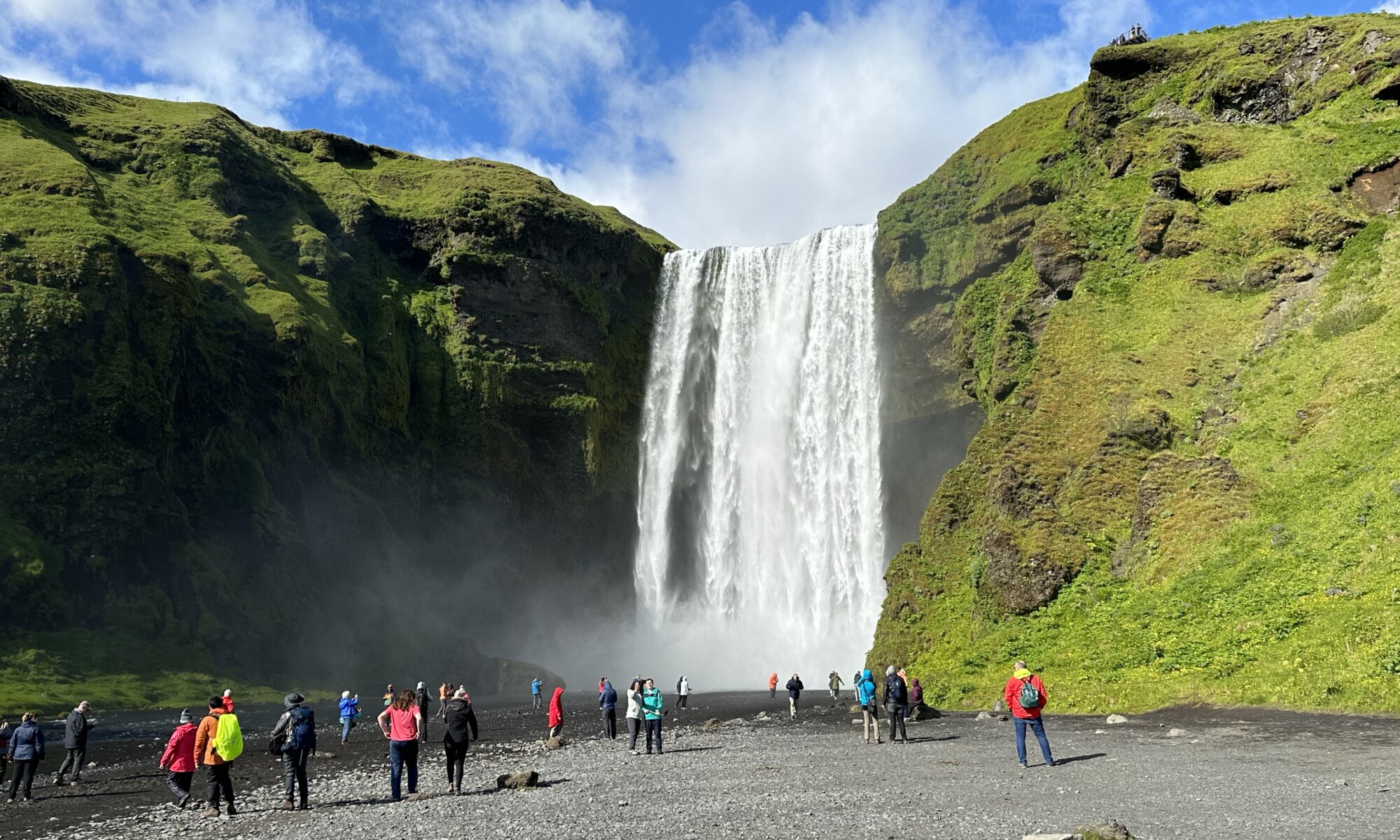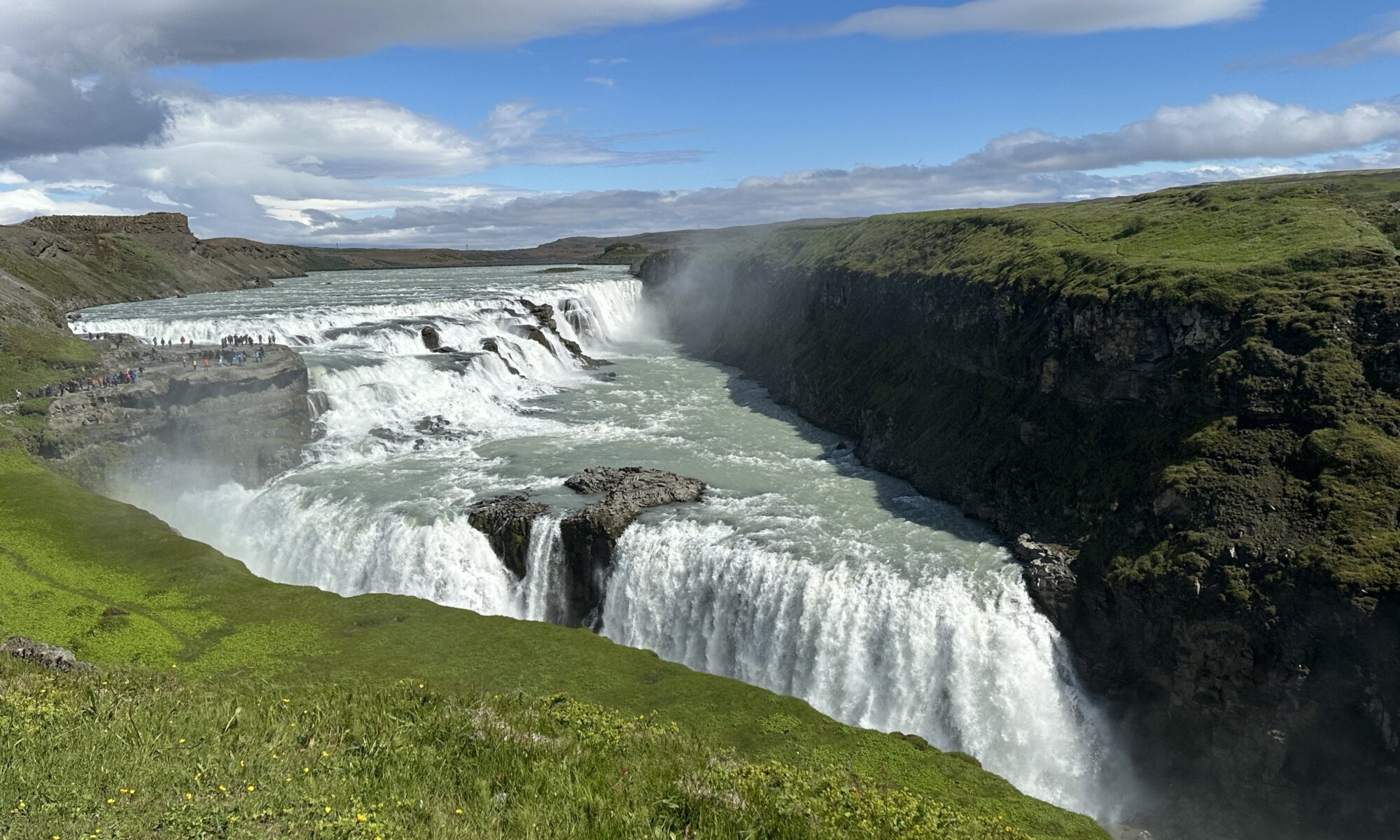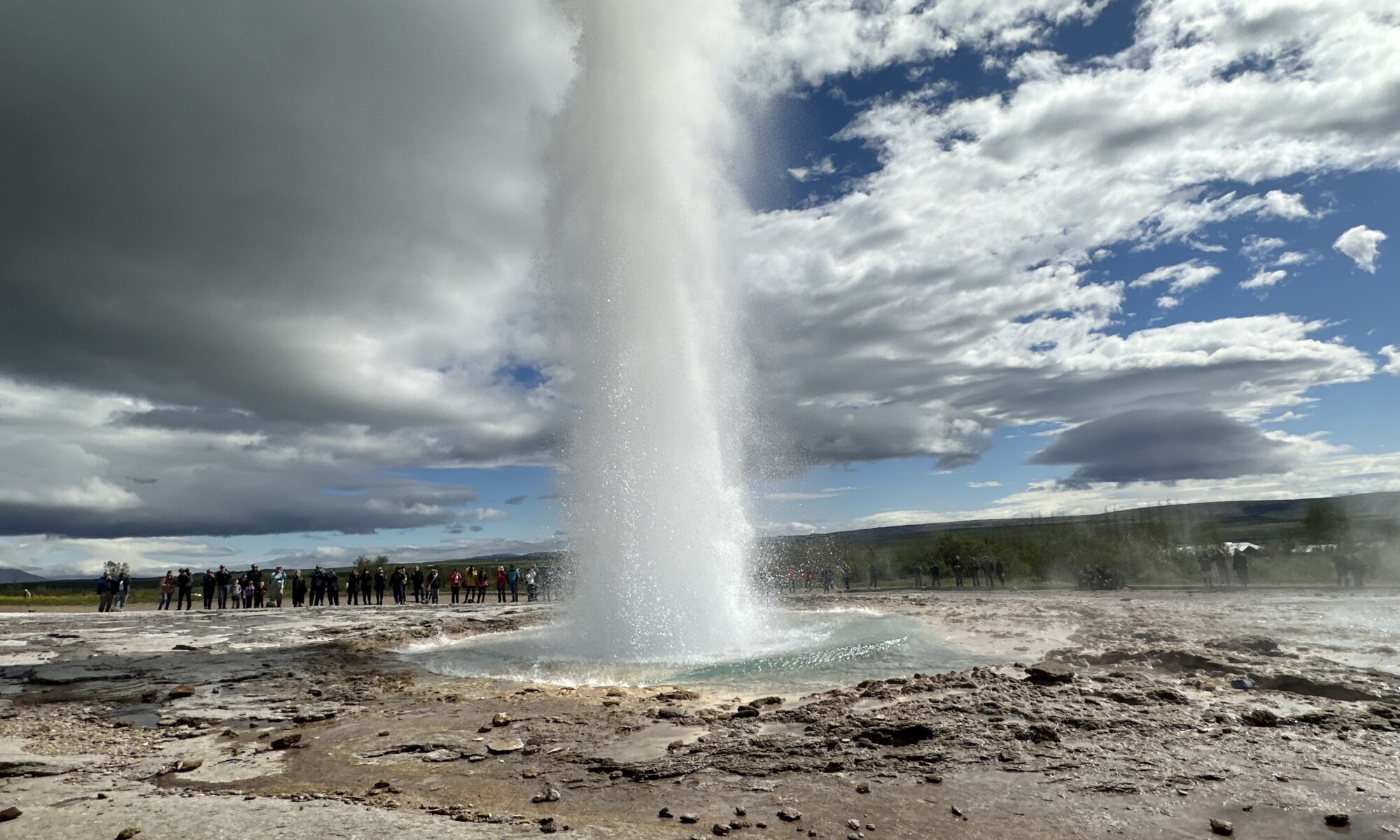The Fjallsárlón is the smaller of the two glacier lakes at the southern end of the Vatnajökull glacier. The Breiðá river connects it to the sea and the area is part of the national park and thereby protected. Once you’ve left your car and walked over a small mountain you can see the impressive white glacier and the icebergs drifting on the lake. If you want to there is the opportunity to take a boat cruise on the glacier lake and get closer to the ice.
Continue reading “Glacier lake”Skaftafell
The Skaftafell oasis in the Vatnajökull national park is a welcoming place in an otherwise rough landscape. The visitor’s center provides you with everything you need and then it is up to you: waterfall or glacier? In one direction you can hike to the nice Svartifoss waterfall, in the other direction a geologically interesting path guides you to the Skaftafellsjökull glacier. But the way to walk has extended over the last years; because of climate change the glacier has reduced in size dramatically.
Continue reading “Skaftafell”Dverghamrar
After leaving Kirkjubæjarklaustur to the east you’ll see a magic scenery: a small settlement underneath high rocks and a slim waterfall (the Foss á Síðu) dropping down to the houses. On the other side of the road you’ve got a good opportunity for a break: Dverghamrar offers a parking area and small round course to volcanic remains close to the road. Large basalt columns line up between green fields.
Continue reading “Dverghamrar”Kirkjubæjarklaustur
The tiny village of Kirkjubæjarklaustur offers some natural beauties: two waterfalls, basalt columns and a beautiful valley. They all aren’t the biggest ones of their kinds you’ll find on Iceland, but therefore they’re typically not as overcrowded as their big brothers (and sisters). The best-known is the waterfall Systrafoss which is not really falling but running down on giant rocks. You can hike up and discover the lake behind.
Continue reading “Kirkjubæjarklaustur”Black beach
The area around Vík í Mýrdal has a nice specialty: beaches with sand black as the night. I mean the real night, not the three hours of slight ‘darkness’ Iceland experiences these days every night. On some days you might go swimming there, but it creates a wonderful atmosphere all year round. From the Black Beach at Vík í Mýrdal you can have a good look at the Reynisfjall rock structures, but you also should take the trip up the hill to the Dyrhólaey viewpoint.
Continue reading “Black beach”Skógafoss
At Skógar you can discover another magnificent Icelandic waterfall, the Skógafoss. Between green rocks it falls over a cliff and you can take a shower underneath if you want. The waterfall is an excellent starting point for a hike: on the right-hand side of the waterfall steps give you the chance for a step and rather long ascent to the top.
Continue reading “Skógafoss”Seljalandsfoss
Iceland has many beautiful waterfalls, but Seljalandsfoss is one of the best. It is the largest one of a series of three waterfalls underneath the Eyjafjallajökull volcano (remember when it stopped air traffic in 2010 completely?). Seljalandsfoss has a specialty that makes it very entertaining: you can walk behind the waterfall without getting too wet. It is an amazing photo opportunity and if you have sunshine you’ll almost all the time see a colorful rainbow.
Continue reading “Seljalandsfoss”Gullfoss
The golden waterfall (‘Gullfoss‘) is a two-level waterfall northeast of Reykjavík and together with places like Þingvellir part of the so-called Golden Circle of Iceland. The waters of the Hvítá river are running over wide cascades and then falling into a gorge, creating a massive amount of spray. It is an amazing sight you can view from different angles: for sure from the top, but you can also take some steps down to the gorge and hike down a path to the cascades – then you’re directly at the center of action and in-between the two levels.
Continue reading “Gullfoss”Strokkur
Geysers are a wonderful natural phenomenon: water is heating up underground and every now and fountain of hot water is splashing out. Maybe the best place to see this on Iceland is the geyser Strokkur at Selfoss (not to be confused with the waterfall carrying the same name). It is very reliable and shooting out water every five to six minutes; a fountain that is 20 to 30 meters high. That is why there is always a large crowd surrounding the hot spring and waiting for the next eruption.
Continue reading “Strokkur”Þingvellir
Northeast of Reykjavík you can find the Þingvellir national park, an area with wonderful nature and special in different ways. First of all, the Eurasian and the American plate drift apart there and form the Almannagjá (‘all men’) valley. You can hike between the high rocks and the Öxará river runs there, forming the beautiful waterfall Öxarárfoss. But this place was also always important in Icelandic history as the location of its ancient parliament, the Alþingi.
Continue reading “Þingvellir”